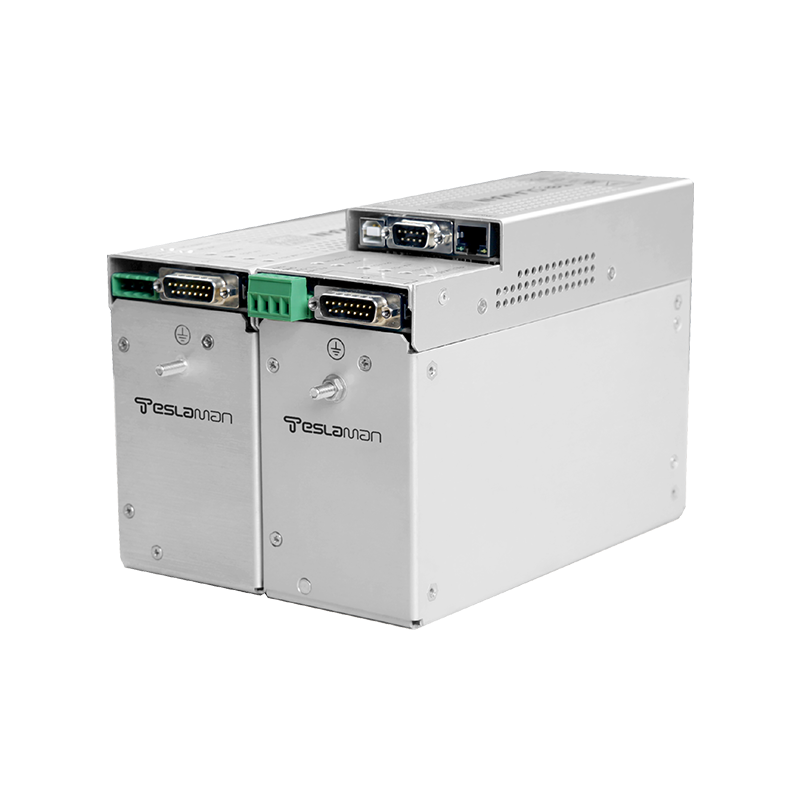High-Voltage Power Supplies for Ion Implantation: Light-Load Efficiency Mode—Technical Breakthroughs and Application Value
In semiconductor manufacturing and new material modification, ion implantation processes often encounter light-load conditions (e.g., local doping, micro-area tuning, or R&D-level low-dose implantation). Traditional high-voltage power supplies face core issues of plummeting efficiency and surging energy consumption in such scenarios. The light-load efficiency mode achieves multi-dimensional optimization through technological innovations, making it a critical advancement for next-generation ion implantation equipment.
1. Technical Principles of Light-Load Efficiency Mode
1. Multi-Mode Dynamic Switching
The core of this mode lies in automatically shifting states based on real-time load demand:
• Heavy-load conditions: Use PWM (Pulse Width Modulation) to ensure high-energy output stability.
• Light-load conditions: Switch to PFM (Pulse Frequency Modulation) or Burst Mode, reducing switching losses by lowering frequency or cyclically deactivating modules. For example, when ion beam current drops below 10% of the rated value, Burst Mode cuts quiescent current to milliampere levels, slashing power consumption by 80%.
2. Circuit Topology Innovations
• Interleaved Boost Circuit: The front-end PFC (Power Factor Correction) adopts a dual-inductor parallel structure. Under light loads, one inductor path is disabled to minimize switching losses.
• Series IGBT Pull-Down Technology: For capacitive loads in plasma immersion ion implantation (PIII), IGBT series switches replace traditional resistor discharge. This reduces energy loss from 6.25 kW to below 1 kW while shortening pulse fall time from 150 μs to 5 μs, preventing low-energy ion interference.
3. Digital Control and Real-Time Feedback
Integrated Digital Signal Controllers (DSCs) dynamically adjust duty cycles and frequency by sampling output voltage, current, and ion beam parameters. For instance, increasing dead time during light loads enables Zero-Voltage Switching (ZVS), reducing core and switching losses.
2. Key Implementation Technologies
1. Hybrid PSM-PWM Modulation
Modular high-voltage power supplies (e.g., cascaded H-bridge topologies) combine PSM (Pulse Step Modulation) with PWM:
• Base voltage is controlled by PSM via subunit activation (e.g., 270 subunits for 100 kV).
• Ripple suppression uses PWM to fine-tune the last subunit’s duty cycle, narrowing output fluctuation from ±400 V to ±100 V.
2. Synchronous Rectification
The DC/DC conversion stage employs phase-shifted full-bridge synchronous rectification, replacing diodes with MOSFETs. Under light loads, extended conduction time forces Discontinuous Conduction Mode (DCM), cutting reverse recovery loss by 40%.
3. Adaptive Phase Shedding
Load current thresholds trigger phase deactivation: When output falls below a set value (e.g., 10% in a 50 A system), one PFC inductor path is disabled, and analog modules shift from 5 V to 4.3 V supply, reducing quiescent current from 4 mA to 100 μA.
3. Case Study: Plasma Immersion Ion Implantation (PIII)
In PIII processes, light-load mode addresses two critical issues:
1. Energy Waste: Traditional pull-down resistors consume 6.25 kW at 50 kV/5% duty cycle; IGBT series switches cut this to below 1 kW.
2. Process Defects: Slow fall edges (150 μs) cause 24% low-energy ions to mix into the implantation layer, triggering sputtering and depth deviations. The new design compresses fall time to 5 μs, enhancing layer uniformity.
4. Future Directions
1. AI-Driven Efficiency Optimization
Machine learning algorithms will predict load fluctuations using historical process data, dynamically adjusting control parameters—e.g., adapting light-load thresholds based on ion source degradation models.
2. Third-Generation Semiconductor Devices
SiC MOSFETs and GaN HEMTs will enable MHz switching frequencies, reducing losses and supporting ultra-shallow junction implantation at nanometer-scale precision.
Conclusion
The light-load efficiency mode for ion implantation high-voltage power supplies addresses energy bottlenecks through circuit innovation, digital control, and device-level advancements. As intelligent control converges with wide-bandgap semiconductors, this mode will accelerate the transition toward green processes in semiconductor manufacturing and unlock potential in emerging fields like nuclear fusion and medical particle accelerators.




















